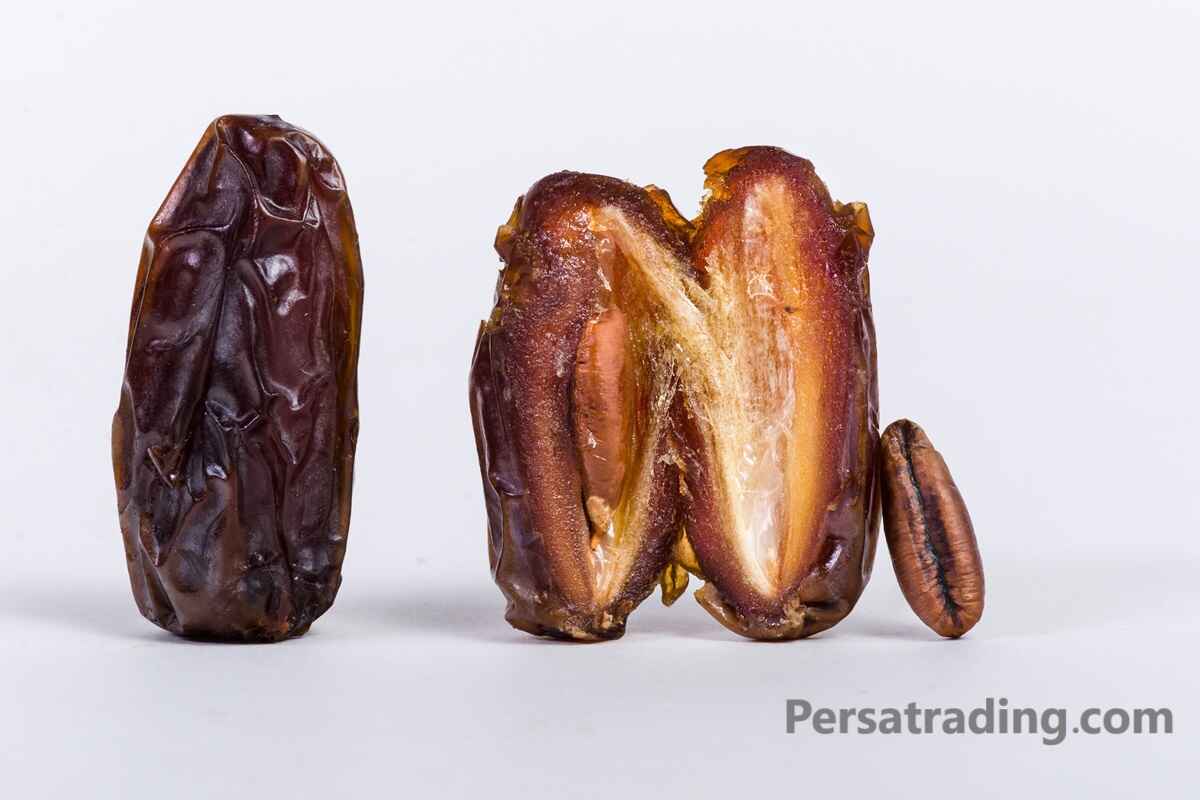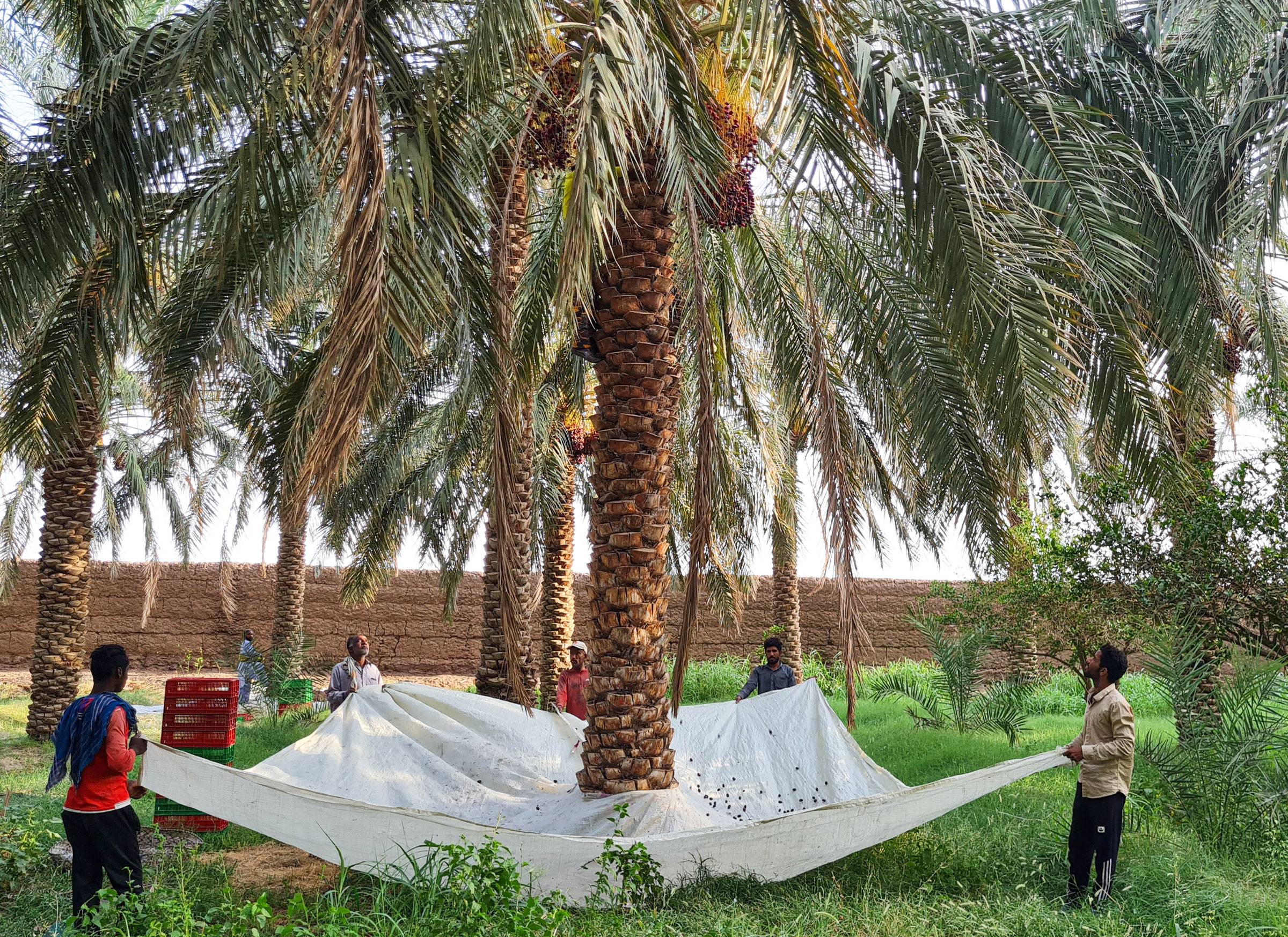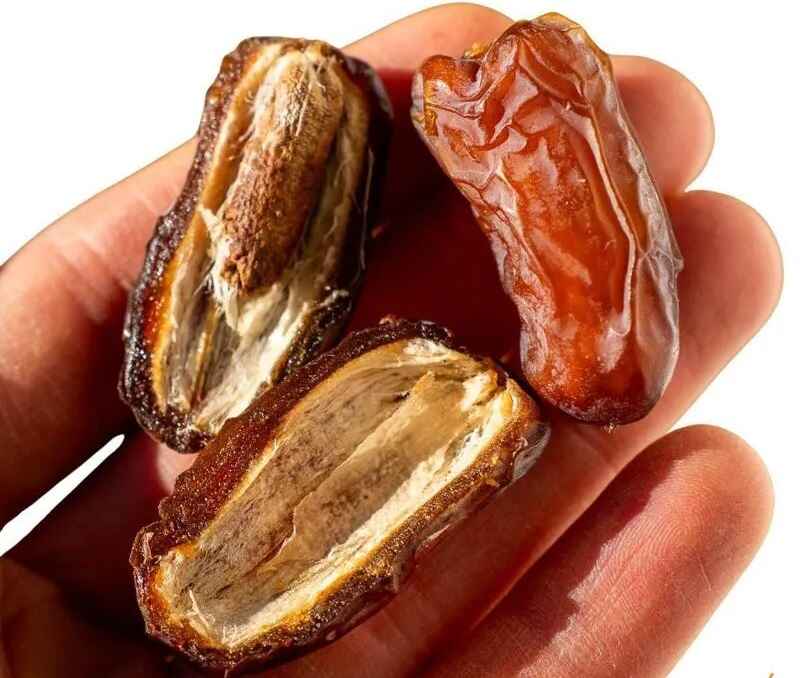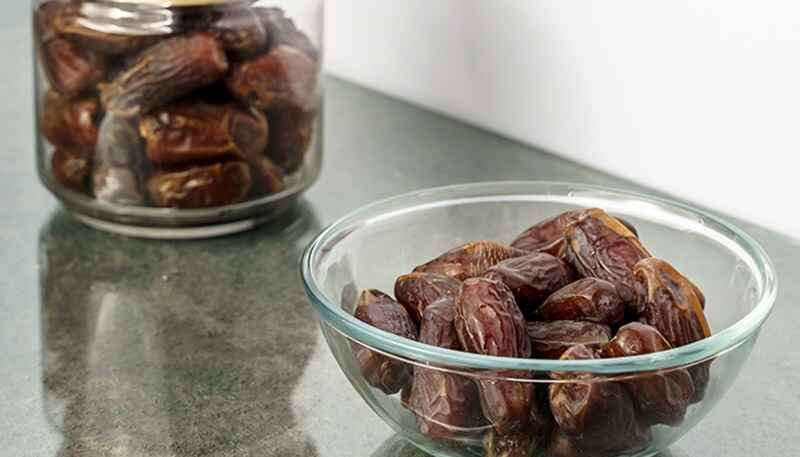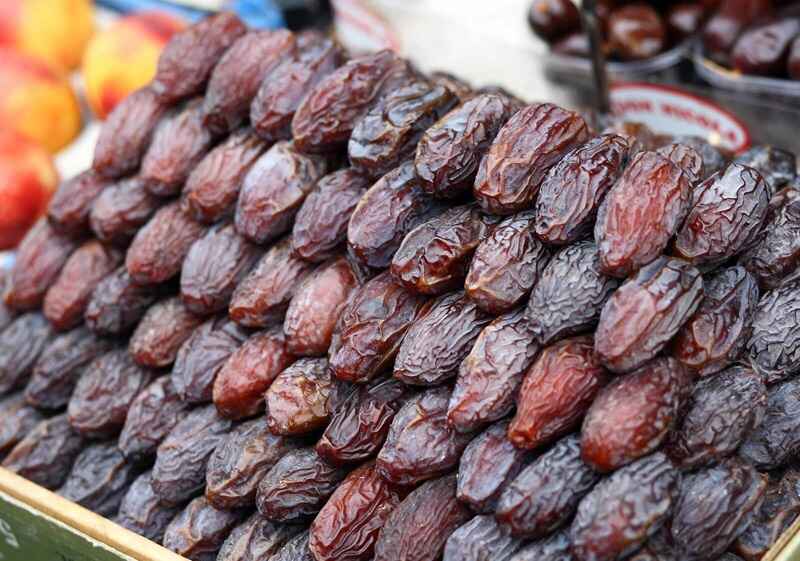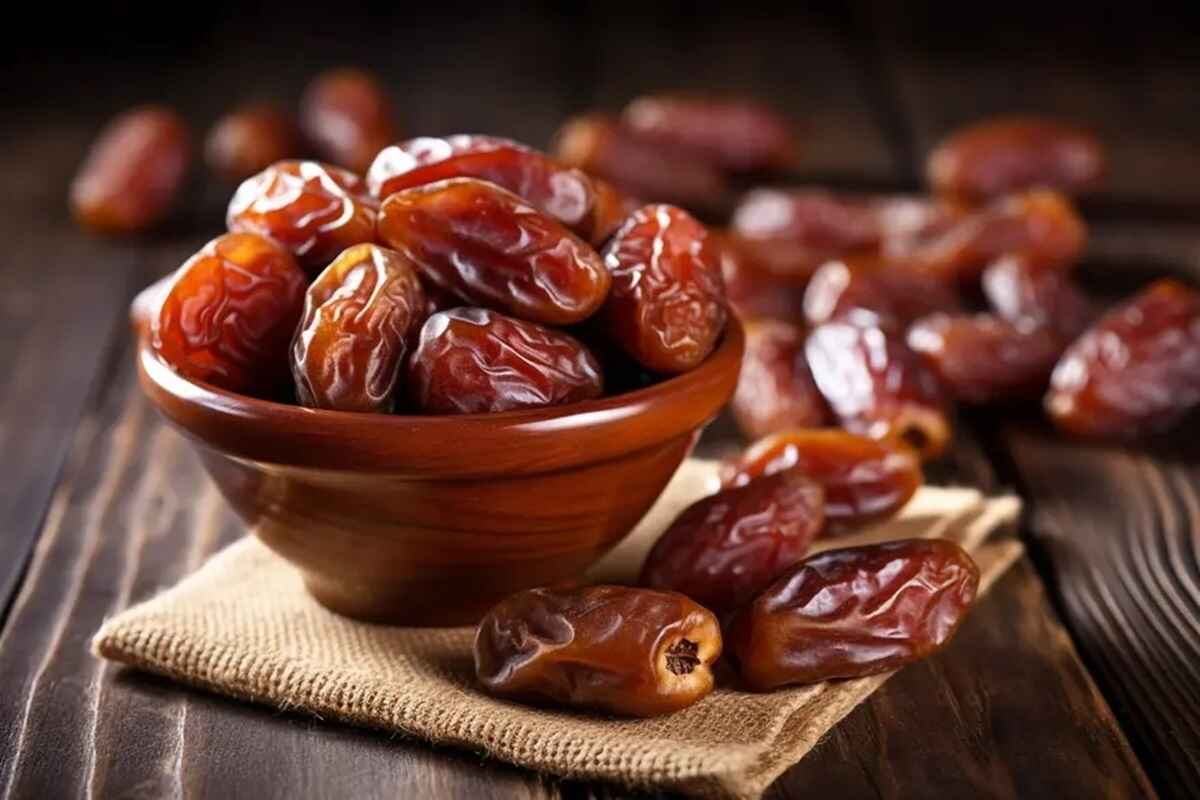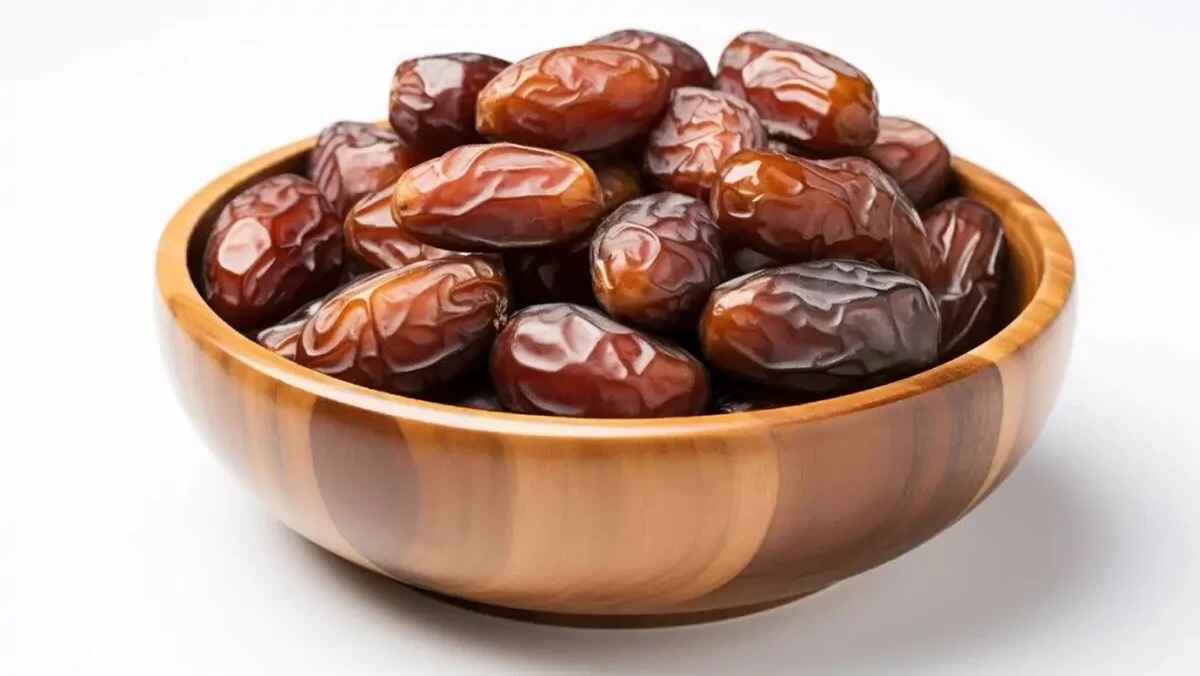What Does Pitted Dates Mean?: Dates have been part of human diets for thousands of years, and among the many forms they take, pitted dates stand out as one of the most convenient, versatile, and commercially valuable. By removing the stone from the fruit, producers create a product that’s easier to eat, easier to use in cooking and manufacturing, and better suited for global trade.
For growers, traders, and consumers alike, pitted dates combine tradition, nutrition, and modern efficiency. At Persa Trading, a leading wholesale dates supplier, we explore the qualities and benefits of these premium pitted dates in this article.
From Ancient Palms to Modern Processing: Pitted Dates
The date palm (Phoenix dactylifera) is one of the oldest cultivated fruit trees, with origins stretching back over 5,000 years to the Fertile Crescent and North Africa. The fruit’s naturally high sugar content and long shelf life made it a staple for travelers, soldiers, and desert communities. Over centuries, dates became integral to the cuisines and cultures of the Middle East, North Africa, and beyond.
In the past, dates were eaten whole, pits included, with the stones discarded during eating. The modern practice of pitting dates—removing the seed before packaging—evolved with the rise of large-scale processing facilities in the 20th century. Today, pitted dates are produced in massive volumes for direct consumption and as raw materials for countless food products.
Varieties Chosen for Pitted Dates
Not all dates are equally suited to pitting. The ideal variety for pitted dates has a relatively loose pit, firm yet tender flesh, and a balanced sweetness. Medjool dates, known for their large size and caramel-like flavor, are a popular choice in premium markets. Deglet Noor, with its semi-dry texture and honey-like notes, is widely used for retail packs and in food manufacturing.
Other varieties, such as Zahidi dates, Khudri, and Sayer dates, also find their way into pitted date production depending on regional supply and target market.
Varietal selection affects not only taste and texture but also processing efficiency. Some cultivars release their pits easily during mechanical pitting, reducing fruit damage and increasing yield.
Cultivation and Harvesting
The journey of pitted dates begins in the date palm orchards. Date palms thrive in hot, arid climates with abundant sunshine and minimal rainfall—conditions found in countries like Iran, Saudi Arabia, Egypt, Tunisia, and parts of California. Farmers typically propagate palms by offshoots, ensuring genetic consistency in fruit quality.
Dates are harvested in late summer to early autumn, depending on variety and climate. Timing is critical: harvesting too early yields fruit that is underdeveloped in flavor; harvesting too late can result in overripeness and reduced firmness, complicating the pitting process. Skilled laborers climb the tall palms or use mechanical lifts to collect bunches of ripe dates, which are then sorted and transported for processing.
The Pitting Process
Once harvested, dates destined for pitting undergo careful cleaning to remove dust and debris. They may be lightly steamed or heated to soften the flesh, making pit removal smoother and minimizing tearing. Modern processing lines use specialized pitting machines equipped with precision plungers or blades that push out the seed in a single motion. For high-value varieties, manual pitting is sometimes used to ensure minimal damage.
After pitting, the dates may be graded again for size, color, and quality. Some are left whole and sold as pitted dates, while others are chopped, pressed into blocks, or processed into pastes for use in confectionery, bakery products, energy bars, and syrups.
Nutrition and Health Benefits of Dates
One of the strongest selling points of pitted dates is their nutritional value. Rich in natural sugars—mainly glucose and fructose—they provide a quick source of energy. They are also high in dietary fiber, which supports digestive health, and contain essential minerals such as potassium, magnesium, copper, and manganese. Vitamins like B6 and niacin add further nutritional depth.
Pitted dates are free from added sugars when sold naturally, making them a wholesome alternative to refined sweeteners in recipes. Their antioxidant compounds, including flavonoids and carotenoids, have been linked to reduced inflammation and better cardiovascular health.
Culinary Versatility of Pitted Dates
The absence of the pit makes dates infinitely easier to incorporate into recipes. In home kitchens, pitted dates can be stuffed with nuts or cheese, blended into smoothies, or chopped into salads. In the food industry, they are a natural sweetener and binder in snack bars, baked goods, and cereals. Date paste made from pitted dates is a key ingredient in Middle Eastern pastries like ma’amoul and in health-oriented products targeted at clean-label markets.
Because pitted dates are soft and sticky, they also serve as a textural enhancer in processed foods, helping to maintain moisture and improve mouthfeel without synthetic additives.
Storage and Shelf Life
Pitting dates slightly shortens their natural shelf life compared to whole dates, as the exposed flesh can lose moisture more quickly. However, with proper handling—cool storage, airtight packaging, and in some cases, mild pasteurization—pitted dates can maintain quality for up to a year or more. Vacuum packing and modified-atmosphere packaging are common in export operations, protecting the fruit during long shipping journeys.
The Global Market for Pitted Dates
Demand for pitted dates has grown significantly in recent years, driven by rising health consciousness, the popularity of plant-based diets, and the need for natural sweeteners in processed foods. Major importers include Europe, North America, and parts of Asia, where pitted dates are valued both for direct retail and as bulk ingredients.
Exporters in producing countries have responded by investing in modern pitting and packaging facilities, improving quality control, and diversifying product lines. Organic pitted dates, in particular, are seeing strong growth in premium markets.
Trade Opportunities and Challenges
For companies like Persa Trading, pitted dates represent a high-value export opportunity. However, the market is competitive. Buyers expect consistent quality, compliance with international food safety standards, and packaging that meets the preferences of local consumers. Logistics are also critical—dates are hardy compared to many fruits, but maintaining optimal conditions during shipment preserves flavor and texture.
Currency fluctuations, seasonal yield variations, and phytosanitary regulations can all affect pricing and availability. Successful exporters manage these challenges through careful sourcing, long-term grower relationships, and flexible supply chain strategies.
Cultural and Religious Importance
Beyond their commercial value, dates hold deep cultural and religious significance. In many Muslim-majority countries, dates—often in pitted form—are consumed to break the fast during Ramadan. They are also featured in holiday dishes, wedding feasts, and hospitality rituals. This enduring symbolic role ensures that demand for best quality dates in te world, including pitted dates, remains strong even during market fluctuations.
Sustainability and the Future of Pitted Dates
Sustainable farming practices are becoming more important in the date industry. Water conservation, integrated pest management, and organic cultivation methods appeal to environmentally conscious buyers. Some processors are exploring ways to use the discarded pits for biofuel or animal feed, reducing waste and increasing the overall value derived from each harvest.
With consumer preferences shifting toward healthier, less processed foods, the future of pitted dates looks promising. Innovations in processing and packaging will likely expand their applications even further, from functional beverages to ready-to-eat meals.
Conclusion
Pitted dates from any type of dates (Iranian piarom dates or any type), represent a perfect meeting point of ancient tradition and modern convenience. From their origins in desert oases to their role in contemporary kitchens and factories around the world, they offer flavor, nutrition, and versatility in a single, naturally sweet package.
For producers, traders, and consumers alike, these small yet mighty fruits continue to deliver value—proving that even after thousands of years, the humble date still has new chapters to write in the global marketplace.
